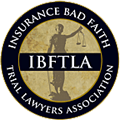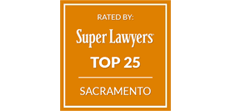Are You Eligible to Collect Damages if You Are Partially Responsible?
Personal injury accidents can be complex, often involving multiple parties and varying degrees of fault. In California, the principle of comparative fault comes into play when determining liability and damages. Even if you are partially responsible for your accident, you may recover damages based on your percentage of fault. This makes it all the more important to work with a highly qualified personal injury lawyer, as you will be able to increase the value of your claim by presenting evidence of the at-fault party’s negligence.
Even if you are partially responsible, you must obtain medical records, pictures, videos, statements from eyewitnesses, testimony from field experts, and other relevant evidence to prove the higher percentage of fault of the opposing party. At Eric Ratinoff Law Corp., we utilize tailored legal strategies and storytelling to frame your case the right way from day one so you can recover compensation for injuries.
California’s Comparative Fault Laws
California follows the principle of comparative negligence, specifically pure comparative fault. This means that even if you are partially at fault for an accident, you may still be entitled to recover damages from other parties involved, although the amount of compensation awarded will be decreased in proportion to your percentage of fault.
When determining the percentage of fault, a thorough investigation will take place, considering the evidence, witness statements, expert opinions, and applicable laws. The court or insurance adjusters will assign a comparative negligence percentage to each party involved. For example, if you are found to hold 20% of the fault for the accident, while the other party is considered to hold 80% responsible, you could be awarded $8,000 if you are seeking $10,000 in damages.
What Factors Determine Fault in a Personal Injury Claim?
In a personal injury claim, determining fault involves assessing various factors to establish who is responsible for the accident, including the following:
- Duty of care: It is important to establish whether the party owed you a duty of care. For example, in a car accident, all drivers have a lawful duty to operate their vehicles safely and follow traffic laws.
- Breach of duty: To determine whether there was a breach of duty, you must examine the at-fault party’s actions or omissions to assess whether they failed to meet a standard of care expected in a given circumstance. For example, even if you were not wearing a seatbelt, a driver must still abide by right-of-way laws to avoid a collision.
- Causation: You must establish a link between the actions of the at-fault party and the injuries you suffered, demonstrating that the breach of duty was the proximate cause of damages.
- Damages: You must show that you suffered economic and non-economic damages due to the at-fault party’s actions or inactions.
Consult the highly qualified personal injury lawyers at Eric Ratinoff Law Corp. to evaluate the specific details of your case and to help you build a strong case to establish liability. We fight for the maximum compensation and justice you deserve.
Speak With the Personal Injury Lawyers at Eric Ratinoff Law Corp.
To ensure a fair assessment of fault in a personal injury claim, consult our skilled legal team at Eric Ratinoff Law Corp. We have over 30 years of experience and can help you navigate the legal process, protect your rights, and pursue the compensation you deserve.
Speak with one of our personal injury lawyers today by calling (916) 970-9100 or filling out a contact form today.

















